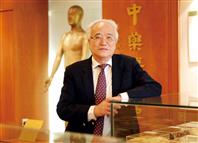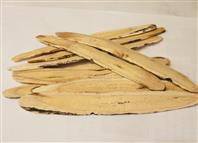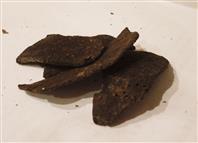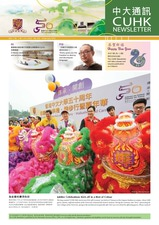In the Romance of the Three Kingdoms, the Legendary Physician Hua Tuo ‘removed the poison from General Guan Yunchang’s arm by scraping his bones’. Readers might be amazed by Hua’s bold and innovative treatment. With talent and courage comparable to Hua Tuo’s, Prof. Leung Ping-chung, Emeritus Professor of Orthopaedics and Traumatology at CUHK, uses Chinese herbs as a supplementary therapy to leg ulcers suffered by diabetes patients, and in doing so, prevents the need for amputation. He has also been conducting research for over a decade, which has proven the effectiveness of the herbs.
Professor Leung’s father was an amateur Chinese medicine practitioner who treated patients from the nearby community. That is why Professor Leung got to know about Chinese medicine. In the late 1970s, he came across many patients who had pain in their lower back, hands and neck even though they had tried lots of treatments. He used acupuncture to alleviate their pain and the result was encouraging. In 1979, Professor Leung published the first article on acupuncture by a practitioner of Western medicine in Hong Kong.
Diabetic foot is one of the complications of diabetes. Long-term exposure to relatively high blood glucose levels will cause changes in nerve endings. This will lead to foot sensory loss resulting in inability to promptly identify foot problems. Further, when the blood vessels harden, blood supply to the foot will become insufficient, making the wounds difficult to heal. Most seriously of all, it will cause the death of tissues, which necessitates limb amputation in order to save one’s life. Professor Leung treats quite a number of diabetic foot patients. He pointed out that patients with diabetes have a 12–25% lifetime risk of developing a foot ulcer. It’s estimated there are about 150 amputation caused by diabetes every year in Hong Kong. This is clearly not an ideal treatment. ‘Prosthesis compliance is neither easy nor comfortable for the patient. Their quality of life is seriously impaired, particularly for elderly patients as stumps heal slowly and this is further hampered by the friction with the prostheses. Only very few seniors can use prostheses.’
Seeking the Ultimate Cure
Professor Leung believes the ideal treatment is curing the ulcer and avoiding amputation. In the mid-1990s, he attended a briefing session on the unique herbal formulae which was claimed by a Chinese medicine hospital in Shanghai to be very effective in treating blood clots. ‘Of course, I had doubts. Several months later, I visited the hospital to learn more and found that the formulae did perform satisfactorily in treating ulcer. I invited the hospital for a collaborative study but my invitation was turned down.’
However, Professor Leung did not give up. With the aim of helping patients, he started the research by purchasing the formulae from the hospital for analysis and examining the hospital’s papers on them. It was found out that the Shanghai treatment regime was similar to a popular ancient formula that was supposed to ‘strengthen muscles and control swelling’ and Liu Wei Di Huang Wan (commonly used Chinese medicine which nourishes the kidneys). Based on these findings, Professor Leung selected over 10 herbs with similar effects such as Radix Astragali (Huangqi, RA), Radix Rehmanniae (Shengdi, RR), Rhizoma Atractylodis Macrocephalae, Radix Stephaniae Tetrandrae, Radix Polygoni Multiflori Preparata, Rhizoma Smilacis Chinensis, Fructus Corni, Rhizoma Dioscoreae, Cortex Moutan, Rhizoma Alismatis, Poria and Fructus Schisandrae Chinensis, etc., for a pilot study in 1998.
The pilot study selected 30 patients with a total of 40 legs with chronic ulcers. They took the herbal preparations by Professor Leung’s research team besides the standard treatment. Of these, 35 legs treated with the herbal formulae were salvaged. Of the 35 rescued from amputation, 27 took less than 10 weeks to heal, the rest took 11 to 30 weeks. In 2000 the Far Eastern Economic Review presented the Asian Innovation Silver Award to Professor Leung on his breakthroughs in the treatment of diabetic foot by Chinese herbs.
Three-pronged Approach
In 2001, the Chinese Medicine Research and Further Development Project led by Professor Leung was funded by the University Grants Committee as an Area of Excellence. The efficacy of herbal formulae for promoting diabetic wound healing was an item on the research list.
Professor Leung emphasized, ‘The research adopted an evidence-based approach towards (1) authenticating the herbs’ clinical efficacies through their cellular and molecular mechanism by using multi-biological platforms; (2) working on the quality control of herbs so as to ensure its safety and meeting GMP (good manufacturing practice); (3) running clinical trials.
‘When more herbs are used, there will be more variations, interactions and complications in quality control, so we tried to reduce the number of herbs. Subsequent studies on the herbs indicated that two of them—Huangqi (RA) and Shengdi (RR), had the most impressive effects on wound healing. It was therefore the simplified two-herb formula (NF3) comprising RA and RR in the ratio 2:1 that was used for further studies.’
Eighty diabetic patients were recruited for the study with 86% above 65 years of age. All of them suffered from extensive ulcerations, complicated by infection, or gangrenous parts. Amputation was already the recommended treatment from the orthopaedic teams. The study was a double-blinded, randomized placebo-controlled (i.e., herbal group) trial.
While the primary aim was ulcer healing with no major amputation, Professor Leung stated that if there was no obvious improvement after three to four weeks of treatment, the patients would all be given the herbal option, irrespective of which group they belonged to. Professor Leung concluded, ‘The most exciting finding of the study (see Table for brief results) was the decline of serum tumour necrosis factor alpha (TNFα) in the herbal group. This illustrated clearly the effect of the herbs on anti-inflammation, scar development, angiogenesis and granulation. The healing time was shorter too.’
For Ulcers Other Than Diabetic Foot
Professor Leung said that though the studies have proved the efficacy of NF3, it’s still a long way to the manufacturing of pharmaceuticals. ‘We are working on changing the herbal preparations from decoction to ointment which can be put directly on ulcers for better efficacy. In addition, we’ve launched a new phase of research on patients with ulcers derived from other diseases such as wounds, varicose veins.’ While the road is long, Professor Leung will go on because he believes, a doctor’s responsibility is to cure patients. 
Brief Results of the Studies of NF3 Effects on Diabetic Foot Ulcer
|
Amputation because of rapid deterioration in first four weeks |
No improvement in first four weeks |
Limb salvaged after herbal treatment* |
Amputation in spite of herbal treatment |
Total no. of amputation |
|
|
NF3 Herbal treatment |
3 |
6 |
— |
— |
3 |
|
Placebo |
3 |
12 |
6 |
6 |
9 |
*Patients of the placebo group with no obvious improvement after four weeks were given the herbal option




































































































































































Social Bookmarks